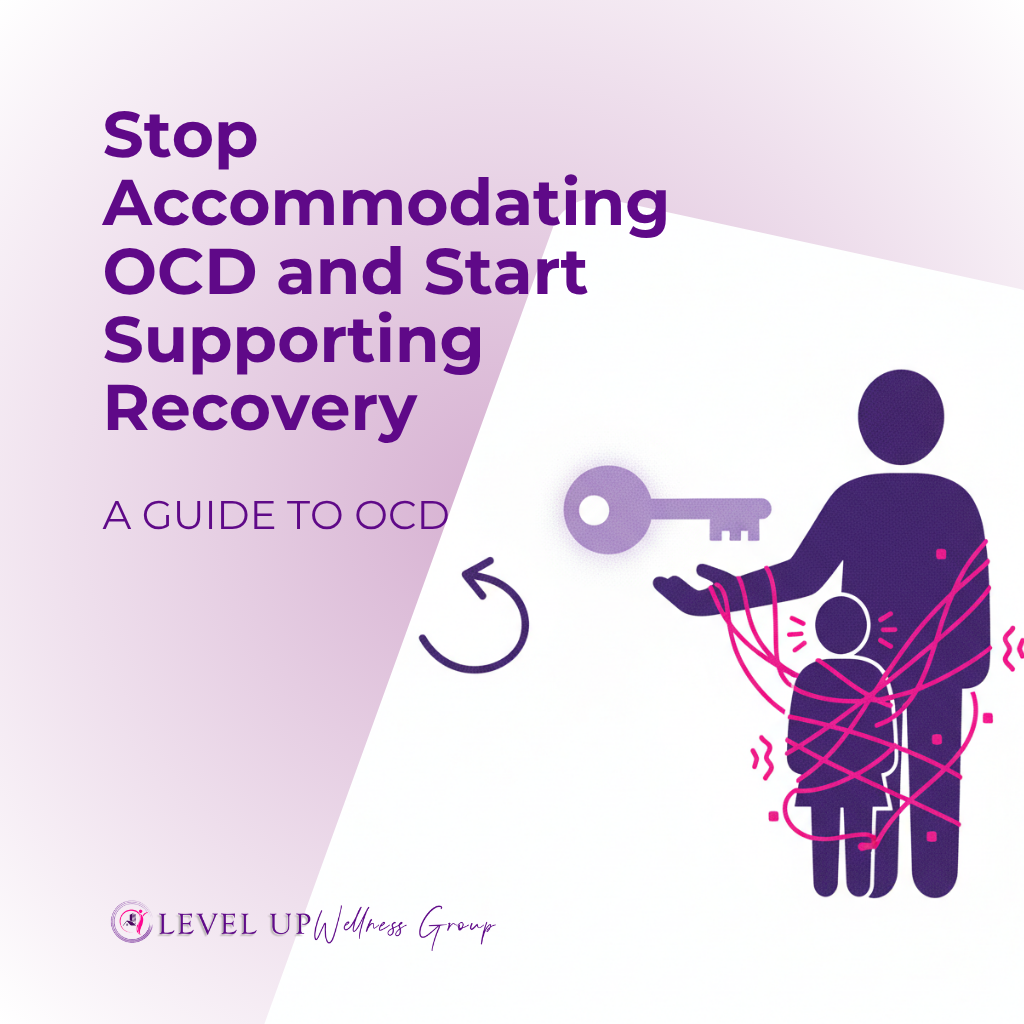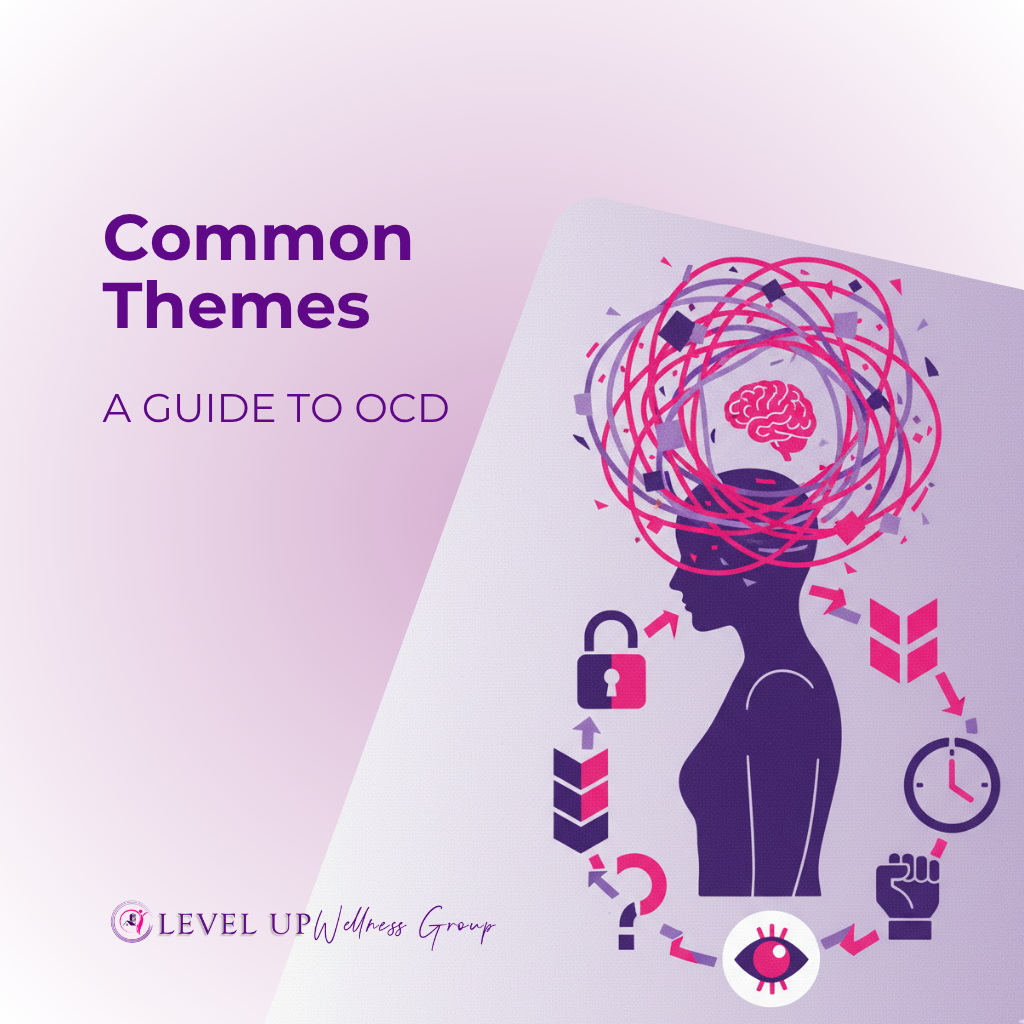
Obsessive Compulsive Disorder (OCD) is often a very private struggle. Kids, youths, and adults alike may not feel comfortable sharing their intrusion and compulsion. I can speak to this experience firsthand; my child was diagnosed with OCD at 4 years old. My first role is a mom, my second is a psychologist. What have I learned through my years of professional training, and as a mom of a child with a mental health struggle? Finding professionals and programs that support children and families with OCD can be tough and overwhelming. Finding specialized training to help support others with OCD often requires travel to areas where specialists practice. OCD can cause a great deal of shame and embarrassment for sufferers and their family. Intrusive thoughts or images that the sufferer has can be attached to thoughts and actions that are considered by society to be taboo. This can lead to an unwillingness to get support or share their concerns with people. The more “taboo” the obsession, the less likely the individual will reach out for support. Instead, the thoughts and compulsions can be left in the minds of the sufferer, often leading to depression and anxiety.
Types of Intrusive Thoughts and Subtypes of OCD
Intrusive Thoughts
Intrusive thoughts range from sexual and violent thoughts to intrusive thoughts of harming oneself or others. These thoughts are unwanted and can cause significant distress and anxiety.
Common Subtypes of OCD
There are a variety of subtypes of OCD that are not commonly known to therapists or the general public. Contamination OCD, with handwashing compulsion, is often, erroneously, the archetype of OCD in many people’s minds. Additional subtypes of OCD have been identified through years of research, such as:
- “Just Right” OCD
- Harm OCD
- Scrupulosity
- Pure OCD (obsessions with mental compulsions, not behavioral compulsions)
- Post/Perinatal OCD
Common types of compulsions include checking, contamination, ordering and arranging, repeating, and mental compulsion (IOCDF, 2021).
Misdiagnosis and Compulsions
OCD is often incorrectly diagnosed as anxiety, as the sufferer tends to explain their symptoms as worries, and, subsequently, as feelings of anxiety. What differentiates OCD from anxiety is that the intrusive thoughts are typically reinforced by some type of compulsion that temporarily decreases the anxiety, fear, or disgust that the individual experiences. Compulsions can appear to be “healthy” on the surface, but upon closer examination, the compulsion or coping strategy is actually interfering with the individual’s functioning. I’ll give an example. A 40-year-old man came to see me at my clinic with concerns regarding his thoughts. Helping him explore his thoughts was the key to understanding what his compulsions were. He identified that yoga played a large role in his life and that he used it as a coping strategy. I learned that a previous therapist had erroneously advised him to use coping strategies to decrease his anxiety. As a result, my client spent more than 4 hours a day engaged in yoga and relaxation strategies to avoid his unwanted thoughts. Anytime he had unwanted and intrusive thoughts, he practiced yoga. The yoga became the tool that he was using to neutralize his fear or discomfort, rather than slowly increasing his tolerance to the unwanted, intrusive thoughts.
Pure-O and Cognitive Compulsions
It is important for both individuals and professionals to know that there is not always an external compulsion to decrease the anxiety that develops from the obsession. I have supported individuals where they have “Pure-O”- meaning, there are no visible compulsions. Some people may need to repeatedly make comments in their head, or count, or draw images, or use some other type of internal dialogue, such as praying. The compulsions are all cognitive. How do you know if you may be struggling with OCD?
Self-Assessment for OCD
Track Your Behavior
- (A) Is there an image, thought, or behavior (obsession) that causes some type of negative internal state?
- (B) Do the images, thoughts, or behaviors cause the negative feelings to increase?
- (C) Do you engage in some type of behavior (including avoidance) or thought to decrease the negative feelings (compulsions)?
- (D) Does the cycle seem to repeat itself because the action, ritual, or routine that you engage in only provides temporary relief from the negative feeling?
Identify the Nature of Your Anxiety
Is there perhaps fear or disgust that is causing the behavior?
Addressing Negative Feelings
How are you addressing the negative feelings (anxiety, fear, disgust) by avoiding certain events, situations, or places? For example, avoiding knives, areas that are high touch, or places that may trigger the negative feelings (malls, bathrooms, etc)?
Adding Behaviors
Are you adding a behavior into the chain of events? For example, are you engaging in some type of routine or ritual to temporarily decrease the negative feelings that you are experiencing? The negative feelings do not need to completely disappear, they simply need to decrease.
Changes in Life
Do you feel like your rituals or routines increase when there are any changes in your life, positive or negative?
Managing Unwanted Thoughts
Are your thoughts unwanted and are they difficult to manage?
Increase in Time Spent on Rituals
Do you feel like, over time, you are spending more time on your rituals or routines?
If you answered yes to these questions, you may want to reach out to an OCD specialist. It is estimated that between 2-3% of the worldwide population suffers from OCD, the symptoms of which can have a much more debilitating effect on the sufferers and their families than many other mental health conditions (Torresan, Alice de Mathis & Shavitt, 2020). In fact, the World Health Organization (WHO) has identified OCD as one of the top 10 most debilitating mental health illnesses, with respect to loss of income and quality of life. It takes an average of 14 years to receive proper diagnostic identification and treatment. The journey to find appropriate treatment can be disheartening for those who suffer from OCD, as well as their families. “The life of patients with OCD is characterized by more years of disability than that of patients with Multiple Sclerosis and Parkinson’s Disease combined” (Del Casale et al., 2019).
For more information, the International Obsessive-Compulsive Disorder Foundation (IOCDF) provides a variety of resource training and clinical questionnaires to support those who work in the mental health field.
“Our patients all believe that their thoughts are odd or crazy; they are embarrassed by their habits and teased by their friends. They keep their ideas and actions secret; indeed, some become brilliant actors at hiding their thoughts or rituals.’ (Dr. Judith Rapoport, The Boy Who Couldn’t Stop Washing)
References
- Del Casale, A., Sorice, S., Padovano, A., Simmaco, M., Ferracuti, S., Lamis, D. A., … & Pompili, M. (2019). Psychopharmacological treatment of obsessive-compulsive disorder (OCD). Current neuropharmacology, 17(8), 710-736.
- Torres, A. R., Torresan, R. C., de Mathis, M. A., & Shavitt, R. G. (2020). Obsessive-Compulsive Disorder in Women. In Women’s Mental Health (pp. 125-139). Springer, Cham.
- Fawcett, E. J., Power, H., & Fawcett, J. M. (2020). Women Are at Greater Risk of OCD Than Men: A Meta-Analytic Review of OCD Prevalence Worldwide. The Journal of Clinical Psychiatry, 81(4), 0-0.




